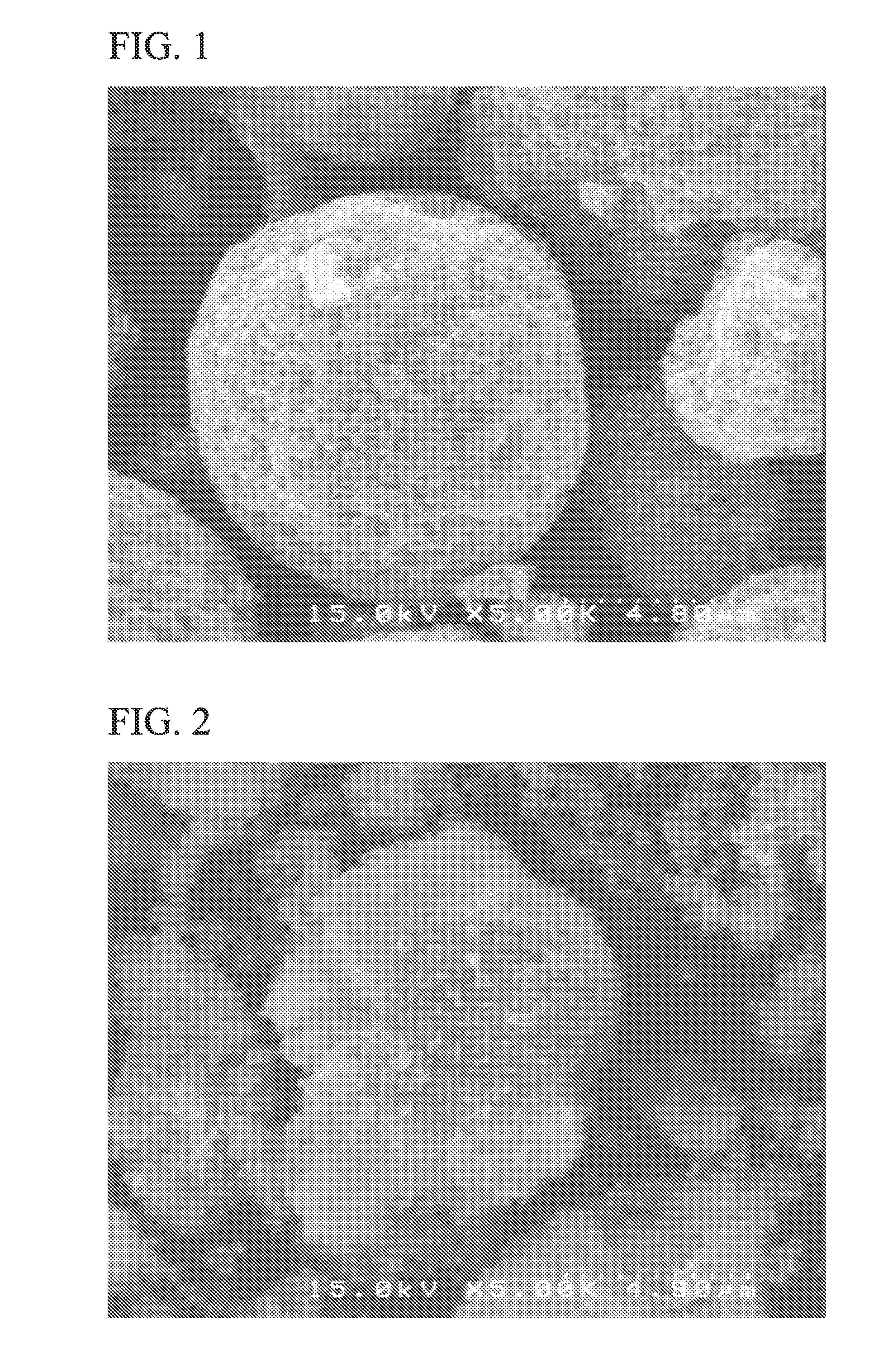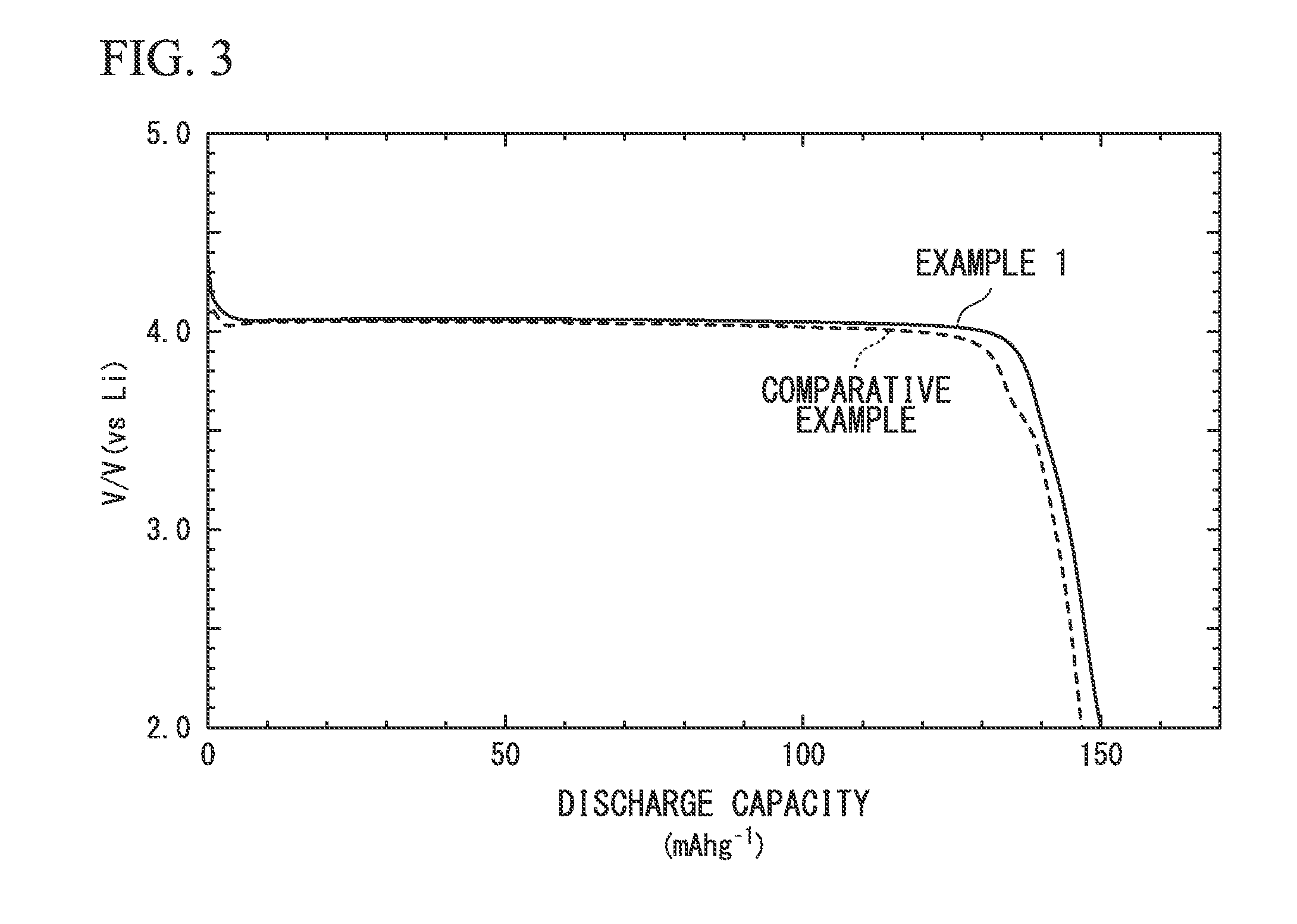Electrode active material and method of producing the same
a technology of electrode active material and active material, which is applied in the direction of cell components, coatings, chemistry apparatus and processes, etc., can solve the problems of insufficient electron toxicity to human body or environment, and insufficient electrochemical conductivity of electrode active material, etc., to achieve good film quality, satisfactory characteristics, and low cost
- Summary
- Abstract
- Description
- Claims
- Application Information
AI Technical Summary
Benefits of technology
Problems solved by technology
Method used
Image
Examples
example 1
[0097]A solution obtained by dissolving lithium acetate, iron (III) citrate, and phosphoric acid in water in a mass ratio of 1:1:1, and an aqueous polyvinyl alcohol solution were mixed to obtain a uniform solution.
[0098]A concentration of the solution was set to 5% by mass in terms of LiFePO4, and 8% by mass in terms of polyvinyl alcohol.
[0099]Then, 100 g of the LiMnPO4 was added to 100 g of the solution, and then a dispersion treatment was performed using a ball mill, whereby LiMnPO4-containing a slurry was obtained.
[0100]The LiMnPO4-containing slurry was dried in a heating dryer, and then was subjected to a heat treatment under a nitrogen atmosphere at 600° C. for one hour, whereby an electrode active material Al of Example 1 was obtained.
example 2
[0101]An electrode active material A2 of Example 2 was obtained in the same manner as Example 1 except that lithium acetate was substituted with lithium nitrate, iron (III) citrate was substituted with iron (III) nitrate, and polyvinyl alcohol was substituted with glucose.
example 3
[0102]LiMnPO4-containing slurry was obtained in the same manner as Example 1.
[0103]Then, the LiMnPO4-containing slurry was sprayed and dried in an atmosphere of 150° C. using a spray dryer.
[0104]Then, the dried product was subjected to a heat treatment under a nitrogen atmosphere at 600° C. for one hour, whereby an electrode active material A3 of Example 3 was obtained.
[0105]A particle shape of the electrode active material A3 was observed by a scanning electron microscope (SEM), and it could be seen that the electrode active material A3 was spherical secondary particles having an average particle size of 10 μm.
[0106]FIG. 1 shows a scanning electron microscope (SEM) image of the electrode active material A3 of Example 3.
PUM
| Property | Measurement | Unit |
|---|---|---|
| particle size | aaaaa | aaaaa |
| particle size | aaaaa | aaaaa |
| temperature | aaaaa | aaaaa |
Abstract
Description
Claims
Application Information
 Login to View More
Login to View More - R&D
- Intellectual Property
- Life Sciences
- Materials
- Tech Scout
- Unparalleled Data Quality
- Higher Quality Content
- 60% Fewer Hallucinations
Browse by: Latest US Patents, China's latest patents, Technical Efficacy Thesaurus, Application Domain, Technology Topic, Popular Technical Reports.
© 2025 PatSnap. All rights reserved.Legal|Privacy policy|Modern Slavery Act Transparency Statement|Sitemap|About US| Contact US: help@patsnap.com


